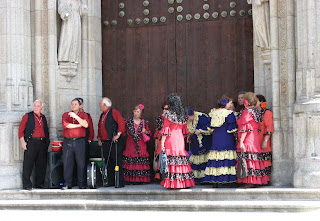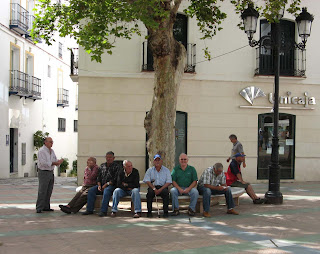 Madrid is a great city and its museums reflect the fact that it was the wealthiest and most powerful European country from the fifteen through the eighteenth centuries. Certainly the Prado Museum reflects this status. They purchased art from Italy and the Low Countries and they attracted artists from these places as well. They identified with classical Rome and classical motifs are evident throughout the royal buildings. We got great exposure to Velesquez, Goya, Rubens, Titian and others at the Prado (spent 7 hours there).
Madrid is a great city and its museums reflect the fact that it was the wealthiest and most powerful European country from the fifteen through the eighteenth centuries. Certainly the Prado Museum reflects this status. They purchased art from Italy and the Low Countries and they attracted artists from these places as well. They identified with classical Rome and classical motifs are evident throughout the royal buildings. We got great exposure to Velesquez, Goya, Rubens, Titian and others at the Prado (spent 7 hours there). This morning we visited El Rastro, which has to be the world's biggest flea market. It extends for about a kilometre up one street but spills out on parallel and side streets; thousands of stalls and hundreds of thousands of locals and tourists. We left all of our valuables except the camera at the hotel and wandered about the market for an hour or so, which was definitely enough -- one of those once in a lifetime experiences.
This morning we visited El Rastro, which has to be the world's biggest flea market. It extends for about a kilometre up one street but spills out on parallel and side streets; thousands of stalls and hundreds of thousands of locals and tourists. We left all of our valuables except the camera at the hotel and wandered about the market for an hour or so, which was definitely enough -- one of those once in a lifetime experiences.From there we toured the Royal Palace and it was over-the-top sumptuous! Although the royal family does not live there, the palace is still used for state occasions such as the signing of the European Union agreements. The conscious attempt to connect the Spanish monarchy to classical origins is obvious in virtually every room. The display of medieval and early modern weaponry in the royal armoury was amazing.
 We had dinner for the last two nights at the Mercado de San Miguel, a large Movenpick-type restaurant that is absolutely packed from about eight o'clock to midnight. The tapas are excellent. Crowds are four or five deep at the counters. We were jammed in and became quite friendly with our neighbours on both nights.
We had dinner for the last two nights at the Mercado de San Miguel, a large Movenpick-type restaurant that is absolutely packed from about eight o'clock to midnight. The tapas are excellent. Crowds are four or five deep at the counters. We were jammed in and became quite friendly with our neighbours on both nights.  The first three couples were from Brazil; their English was pretty good and we parted good friends. The reason that there are only men in the photograph is that the women were off getting tapas for the men. Duane obviously could use a good South American wife!
The first three couples were from Brazil; their English was pretty good and we parted good friends. The reason that there are only men in the photograph is that the women were off getting tapas for the men. Duane obviously could use a good South American wife! Tonight we met a couple from Panama and Argen- tina and again hit it off well. Adrian spoke German and Spanish and Monica spoke Spanish and some English so our conversation was trilingual. Of course Duane exchanged cards and invited all of them to visit us in Canada.
Tonight we met a couple from Panama and Argen- tina and again hit it off well. Adrian spoke German and Spanish and Monica spoke Spanish and some English so our conversation was trilingual. Of course Duane exchanged cards and invited all of them to visit us in Canada.This is our last night "on-the-town" in Spain and it is sad to be leaving. We have truly loved our Spanish Sojourn.
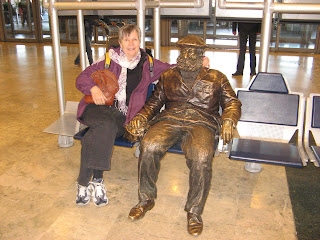


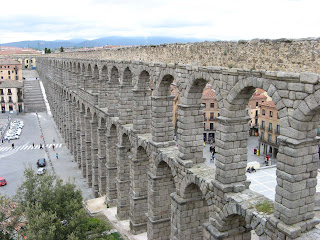








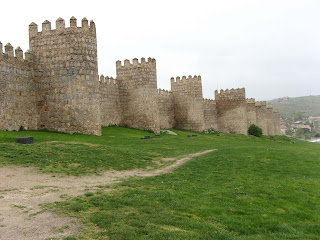



.jpg)
